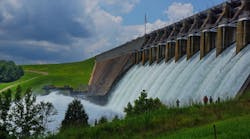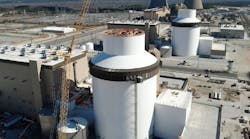The report summarizes research to quantify the value of hydropower in the electric grid. This three-year DOE study focused on defining value of hydropower assets in a changing electric grid. Methods are described for valuation and planning of pumped storage and conventional hydropower. The project team conducted plant case studies, electric system modeling, market analysis, cost data gathering, and evaluations of operating strategies and constraints. Five other reports detailing these research results are available a project website, www.epri.com/hydrogrid.
With increasing deployment of wind and solar renewable generation, many owners, operators, and developers of hydropower have recognized the opportunity to provide more flexibility and ancillary services to the electric grid. To quantify value of services, this study focused on the Western Electric Coordinating Council region. A security-constrained, unit commitment and economic dispatch model was used to quantify the role of hydropower for several future energy scenarios up to 2020. This hourly production simulation considered transmission requirements to deliver energy, including future expansion plans. Both energy and ancillary service values were considered. Addressing specifically the quantification of pumped storage value, no single value stream dominated predicted plant contributions in various energy futures. Modeling confirmed that service value depends greatly on location and on competition with other available grid support resources. In this summary, ten different value streams related to hydropower are described. These fell into three categories; operational improvements, new technologies, and electricity market opportunities. Of these ten, the study was able to quantify a monetary value in six by applying both present day and future scenarios for operating the electric grid.
This study confirmed that hydropower resources across the United States contribute significantly to operation of the grid in terms of energy, capacity, and ancillary services. Many potential improvements to existing hydropower plants were found to be cost-effective. Pumped storage is the most likely form of large new hydro asset expansions in the U.S. however, justifying investments in new pumped storage plants remains very challenging with current electricity market economics. Even over a wide range of possible energy futures, up to 2020, no energy future was found to bring quantifiable revenues sufficient to cover estimated costs of plant construction.
Value streams not quantified in this study may provide a different cost-benefit balance and an economic tipping point for hydro. Future studies are essential in the quest to quantify the full potential value. Additional research should consider the value of services provided by advanced storage hydropower and pumped storage at smaller time steps for integration of variable renewable resources, and should include all possible value streams such as capacity value and portfolio benefits i.e.; reducing cycling on traditional generation....


